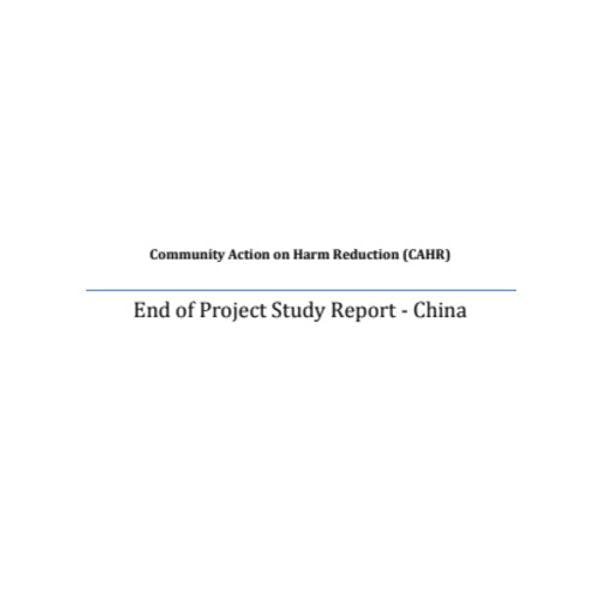Community Action on Harm Reduction (CAHR): End of project study report - China
By the end of May 2013, China had a drug using population of 2,220,000. This number is based on the number of drug users registered in the government system, which means the actual population is much larger. At least 50% of the drug users are people who use injecting drugs (PWID). In China, 28.4% transmission of HIV is through injecting drugs. HIV prevalence among PWID is, reportedly, 6.4%3, while HCV prevalence is 67%.
Although numerous programmes, projects, services and other activities and facilities have been established to support improve the health of PWID, due to overwhelming conflicts between the agendas of public health and public security (war against drugs), PWID is a largely hidden population. They are facing unprecedented challenges, even for living a normal life. In addition, most of the public health policies and practices towards PWID see them as merely negative ‘receivers’, instead of active ‘actors’, it keeps the population even more invisible.
CAHR has been implemented in China since 2011. This project was originally administered by the International HIV/AIDS Alliance China Office, prior to May 2013 under financial support from the Dutch Ministry of Foreign Affairs and overall management by International HIV/AIDS Alliance Secretariat. Project management and implementation was then handed over to the Alliance’s linking organisation in China, AIDS Care China (ACC) in May 2013, due to a decision of closing the Alliance office in China.
Started with one project city (Chengdu, Sichuan Province), CAHR project covered 11 project sites (cities and/or counties) in the south-western provinces of Sichuan and Yunnan in China, as of May 2014.
The purpose of the end-line study was to examine knowledge, attitudes and behaviour of PWID in relation to HIV/AIDS, their well-being and quality of life, satisfaction with HIV prevention services that are being offered, relations with the police, etc.
Keep up-to-date with drug policy developments by subscribing to the IDPC Monthly Alert.
Downloads
Topics
Regions
Related Profiles
- Community Action on Harm Reduction (CAHR)
